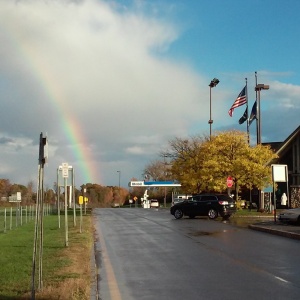(updated June 19, 2023)
In my teaching, I help my LIS graduate students to embrace their role as teaching librarians. For a couple of the classes I teach, they are required to design activities or lesson plans that align with standards appropriate for their communities. While some of this classwork focuses on K-12 standards as an example, I often have students who are focused on adult, higher education, or special library communities.
As a result, over the last couple of years I have developed this annotated outline of different learning standards for different communities, with recommendations about which versions of their documentation to consult, links, and how to cite them by name/number in lesson plans.
I hope you find this helpful!
Jump to: K-12, Higher Ed, Adult Learning, Special Libraries, General
K-12
- Empire State Information Fluency Continuum (ESIFC)
- Priority Benchmark Skills (shorter brochure) – https://slsa-nys.libguides.com/ifc/brochure – Quick overview of expectations for each grade level (Even if you’re not in NY, I highly recommend this as a resource to consider what’s appropriate for each grade level)
- Benchmark Skills for Grades K-12 / Assessments / Common Core Alignment – https://slsa-nys.libguides.com/ifc/continuum (shows ranges of 3 grades or so side by side)
- entire document is at https://slsa-nys.libguides.com/ld.php?content_id=51117430 – This is a little overwhelming at 510 pages, BUT in digital format it can be very handy to do a command-F search to find a specific skill: try searching for things like “notetaking” or “concept map” to find sections related to your particular lessons (and to check where they are developmentally appropriate). In section 5, this includes sample formative assessments organized by grade level, with the grade level and assessment number at the bottom of each page – very helpful.
- Quote different parts of the ESIFC by standard #, section, grade level, and target, for example:
- ESIFC 1.1-Construct-7-Combines information and weighs evidence to draw conclusions and create meaning
- AASL Standards Framework for Learners – Standards Framework
- Framework – https://standards.aasl.org/wp-content/uploads/2018/08/180206-AASL-framework-for-learners-2.pdf
- Pamphlet – https://standards.aasl.org/wp-content/uploads/2017/11/AASL-Standards-Framework-for-Learners-pamphlet.pdf
- Quote different parts as the intersection of columns and rows, for example:
- AASL II. Include – A.Think – 3. Describing their understanding of cultural relevancy and placement within the global learning community (or just AASL II.A.3 for short).
- AASL’S full National School Library Standards are not available for free, unfortunately. You can browse other related content at https://standards.aasl.org/ (or consider investing in the full book).
- ISTE (International Society for Technology in Education)- https://www.iste.org/standards
- ISTE Standards for Students – https://www.iste.org/standards/iste-standards-for-students
- ISTE Standards for Educators – https://www.iste.org/standards/iste-standards-for-teachers
- Quote ISTE Standards by number and letter, including the strand (Empowered Learner, etc.) and number, for example:
- Knowledge Constructor 3b. Students evaluate the accuracy, perspective, credibility and relevance of information, media, data or other resources.
- Common Core State Standards Initiative – https://www.thecorestandards.org/
- Read the Standards – https://www.thecorestandards.org/read-the-standards/ – select ELA or Math on the right, then
- Consider the Anchor Standards as the foundation – select from the menu on the right, at that website, or here’s a helpful 1-pager for that – https://www.sabes.org/sites/default/files/resources/Anchor%20Standards%20Chart%20w%20RF%20hz.pdf
- Then consider what each anchor standard looks like for each different grade level, and how these skills are supposed to build over time. Again, you can choose grade levels from the menu on the right at that website, of you can view the full standards for English Language Arts and Literacy in History/Social Studies, Science, and Technical Subjects at https://learning.ccsso.org/wp-content/uploads/2022/11/ADA-Compliant-ELA-Standards.pdf
- For example, look at page 20 in that PDF and consider how Writing standard #2 is different for grade 3 versus grade 4, and how these grade level standards are more specific about developmental expectations than the anchor standard.
- Quote Common Core Standards with the provided code, including the strand (writing, reading historical texts, etc.), grade level, and anchor number, for example:
- CCSS.ELA-LITERACY.RH.6-8.7 – Integrate visual information (e.g., in charts, graphs, photographs, videos, or maps) with other information in print and digital texts. (reading historical texts, grades 6-8, anchor 7)
- Next Generation Science Standards (NGSS) – https://www.nextgenscience.org/
- New York State Next Generation English Language Arts and Mathematics Learning Standards http://www.nysed.gov/next-generation-learning-standards
- NY Curriculum Resources – http://www.nysed.gov/curriculum-instruction
- NY Science Learning Standards – http://www.nysed.gov/curriculum-instruction/science-learning-standards
- NY Social Studies Standards – http://www.nysed.gov/curriculum-instruction/social-studies/
- Look for a State Ed website for your state, with similar resources as what I’ve shared for NY
Higher Ed
- ACRL Framework for Information Literacy for Higher Education (full version) – http://www.ala.org/acrl/sites/ala.org.acrl/files/content/issues/infolit/framework1.pdf
- How Information Works: A Tool for Understanding Growth in Information Use (using the ACRL Framework)- https://ischoolillinois.libguides.com/ld.php?content_id=53150462
- Quote different parts of the ACRL Framework by frame and knowledge practice, for example:
- ACRL Framework – Scholarship as Conversation – recognize that a given scholarly work may not represent the only or even the majority perspective on the issue
- For content curricula, look for syllabi posted for different departments / colleges, or consult a database of Open Educational Resources like https://www.merlot.org/ to find syllabi in a particular subject area.
Adult Learning
- College and Career Readiness (CCR) Standards for Adult Education
- PDF – https://lincs.ed.gov/publications/pdf/CCRStandardsAdultEd.pdf
- Quote different parts of the CCR standards by strand (writing, speaking and listening, etc.), developmental level, and anchor number, for example:
- CCR.ELA-LITERACY.W.B.8 – Recall information from experiences or gather information from print and digital sources; take brief notes on sources and sort evidence into provided categories (notably, this maps to CCSS.ELA-LITERACY.W.3.8)
- For content curricula, look for unit and lesson plans from a variety of different partners, such as workforce training centers, state health initiatives, etc.
Special Libraries
- Libraries for specific disciplines may have standards provided by different professional associations
- For Law Libraries, for example:
- Principles And Standards For Legal Research Competency – https://www.aallnet.org/advocacy/legal-research-competency/principles-and-standards-for-legal-research-competency/
General
- Bloom’s Digital Taxonomy by Andrew Churches – http://www.ccconline.org/wp-content/uploads/2013/11/Churches_2008_DigitalBloomsTaxonomyGuide.pdf









